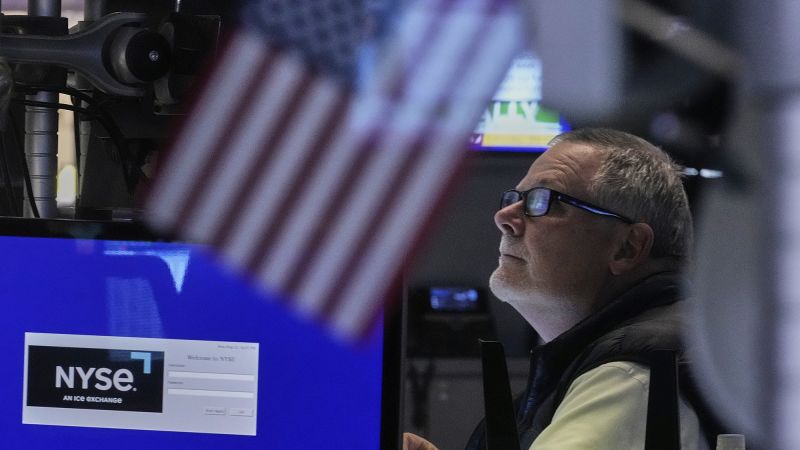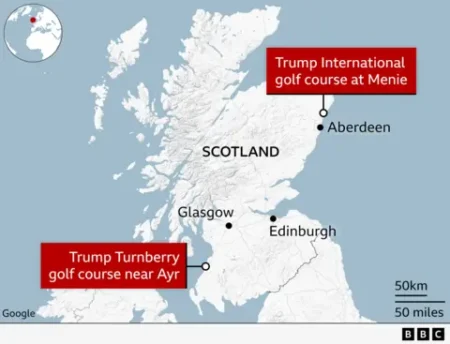The current financial landscape showcases a striking contrast between the behaviors of Wall Street and Main Street investors. While Wall Street appears to be withdrawing funds from the U.S. market, primarily due to concerns surrounding economic uncertainties and trade tensions, retail investors are fervently reinvesting into domestic stocks. This divergence highlights a profound difference in outlook, where retail investors are embracing a “buy-the-dip” mentality, capitalizing on perceived bargains in the stock market.
Wall Street’s perspective seems increasingly pessimistic. Institutional investors are heeding caution, as a recent survey conducted by Bank of America indicated that a significant majority of global fund managers—73%—believe that U.S. exceptionalism is on the decline, pondering reductions in their stock allocations, notably to the lowest levels in two years. Notably, they are also exhibiting a significant reduction in their exposure to the U.S. dollar, which has reached a 19-year low. These reservations stem from concerns regarding the potential repercussions of the ongoing trade war, which analysts predict could adversely affect the broader economy.
Conversely, retail investors appear unaffected by these cautionary signals from Wall Street. For instance, on May 19, retail investors announced an astonishing inflow of $5.1 billion into U.S. stocks, marking the largest single-day investment recorded since JPMorgan Chase began tracking such data in 2015. From April 8 to May 14, retail traders collectively invested a net total of $50 billion, which significantly contributed to a rally in the stock market during late April. Emma Wu, a strategist at JPMorgan Chase, observed that the buy-the-dip strategy had yielded substantial returns, with retail portfolios surging by 15.1% in just one month following their investment in early April.
This division between Main Street and Wall Street underscores a larger uncertainty stemming from President Donald Trump’s second term and its impact on economic policies. The unpredictable nature of White House decisions, coupled with the turbulence of a global trade war, has created a volatile environment for finance and investment decisions. The key question remains whether small investors or large institutions will ultimately succeed amidst shifting policies and evolving market dynamics.
The retail investors’ sentiment contrasts sharply against the careful stance of institutional investors. Jamie Dimon, the CEO of JPMorgan Chase, articulated concerns about the “extraordinary amount of complacency” prevailing in markets, emphasizing that while tariffs have so far not had a major impact, the potential for inflation and stagflation remains a serious risk. He expressed worry over the overarching uncertainty, suggesting that these factors could result in more significant economic impacts down the line.
Similarly, economists predict unprecedented changes ahead due to tariffs, which have already begun to disrupt economic stability. Morgan Stanley’s chief global economist, Seth Carpenter, noted that while clients are feeling hopeful about a reduction in uncertainty, the reality of elevation in tariff levels still looms large. With new tariffs being imposed, notably on imports from Europe, it highlights the precariousness of the current economic landscape.
While retail investors are enthusiastically buying into the market, questions linger regarding the sustainability of this trend. Should they continue this strategy, or would a rotation toward foreign markets present more lucrative opportunities? Steve Sosnick, chief strategist at Interactive Brokers, acknowledged the impressive track record of success associated with buying dips. Still, he cautioned that investors must discern between making calculated bets and engaging in high-risk behaviors akin to “catching a falling knife.”
Moreover, retail traders have gravitated toward well-known tech stocks, such as Nvidia and Tesla, amidst a backdrop of activity driven by significant volatility in the markets. It reflects a preference for familiarity during uncertain economic times. Given that U.S. stocks significantly lag behind European stocks this year, analysts predict potential benefits for investing abroad, which may become increasingly attractive as global stimulus measures gather momentum.
Ultimately, factors such as currency fluctuation, particularly regarding the strength of the U.S. dollar, and ongoing excitement around technology advancements, particularly in Artificial Intelligence, will play pivotal roles in determining the market trajectory. As investment strategies evolve and the economic environment remains turbulent, the ongoing tension between Main Street’s optimistic investment tendencies and Wall Street’s caution will likely continue to shape the investing landscape for the foreseeable future.











